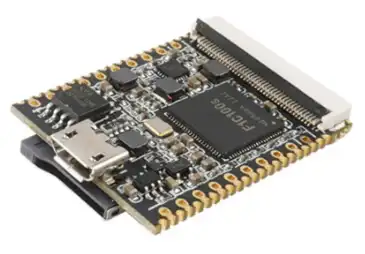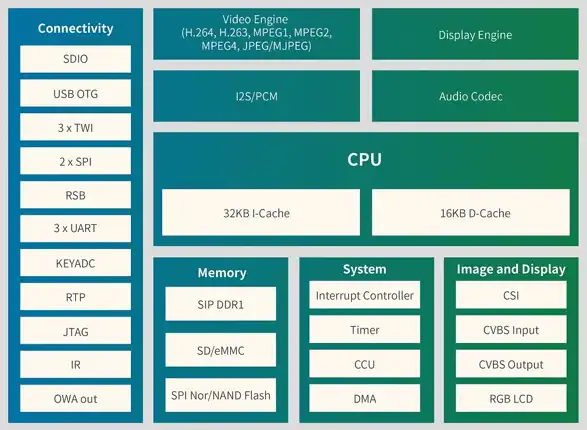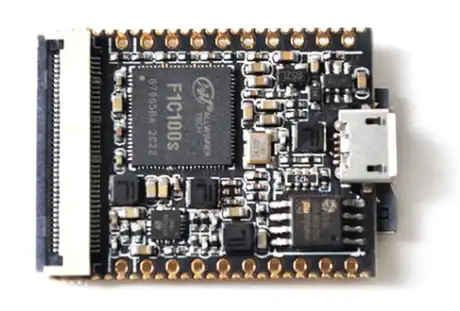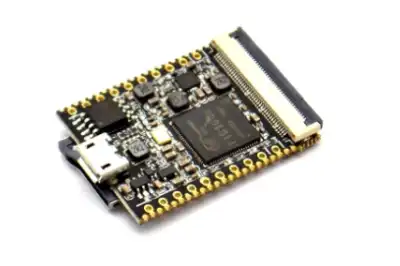The Sipeed Lichee Nano is a Linux-based development board that is about the size of an SD card and priced at around €10.
The Lichee Nano uses an Allwinner’s F1C100s (ARM9) processor that operates at a speed of up to 900Mhz. A processor with a certain age, which is no longer actively used in devices.
Sipeed has decided to intelligently reuse this processor in the creation of development boards. Personally, it seems to me one of the most interesting products that has appeared.

Lichee Nano has integrated 32MB DDR memory in the SoC itself. Storage can be expanded through an 8-32MB SPI Flash memory or through a micro SD card.
As for connectivity, the LicheePi Nano has several input and output ports including, 2x SPI, 3x TWI (I2C), 3x UART, 1x TV out, 2x TV in, 2x PWM, 1x LRADC, 2x speaker outputs, and 1x microphone input. It also has a micro USB OTG port.
The board also features a 40-pin RGB LCD connector that supports resistive and capacitive displays with resolutions of 272×480, 480×800, 1024×600, and video decoding up to H.264/MPEG with resolutions up to 720p.
Unfortunately, it lacks WiFi or Bluetooth wireless connectivity. But it includes an SDIO connection for BT or WiFi modules (but the price of the module costs almost the same as the board!)
As for power, it can be powered by a 5V input through the micro USB port, and 3.3 to 5V through pins. The board also has a 3.3V output and selectable RTC input voltage. Power consumption is 54mA (idle) with Linux and 250mA with the display on.

These are some of its features:
- SoC: Allwinner F1C100s, ARM926EJS processor @900Mhz.
- Memory: 32MB DDR integrated in the SoC
- Storage: Micro SD card, optionally 8MB SPI flash memory
- 2x SPI, 3x TWI (I2C), 3x UART
- 2x PWM
- 1x LRADC
- 1x TV output, 2x TV input
- 2x speaker outputs, 1x microphone input
- 1x micro USB OTG port
- SDIO for WiFi module
- 40-pin FPC RGB LCD connector
- Video decoding - H.264 / MPEG up to 720p.
- 5V input through the micro USB port, 3.3 to 5V through pins.
- Power consumption 54mA (idle) with Linux, 250mA with display.
The LicheePi Nano is compatible with three different operating systems: Linux, RT-Thread (RTT), and Xboot. However, due to the amount of RAM on the board, running a full desktop environment is not recommended.
The Lichee Nano was released for a price of around €8, but it is currently difficult to obtain one. You can find them for €11-12 if you are lucky in your search.

On the other hand, the documentation available about the board is scarce and is exclusively in Chinese. Also, as is often the case with this type of product, it is not an easy device to use.
Beyond the interest of the board itself, which I tell you is more than relative, the most interesting thing is the fact that low-power development boards based on Linux are appearing. A trend that we have been observing for some time, and which is likely to become more and more frequent.
So if, as we hope will happen, in the future Linux is destined to take a good part of the IoT market, boards like the Lichee Nano allow us to experience the first flavors. Simply for that reason, it is already a very interesting board.
References:
